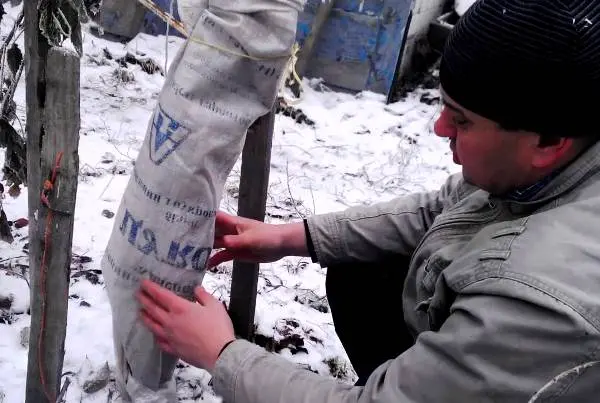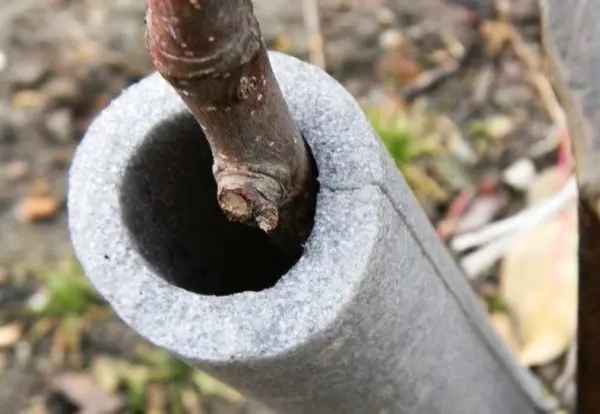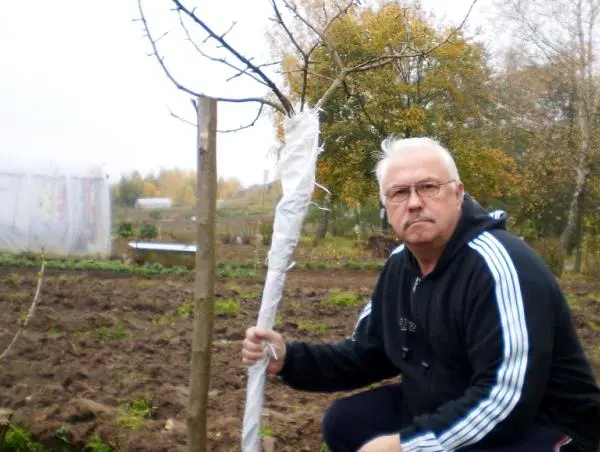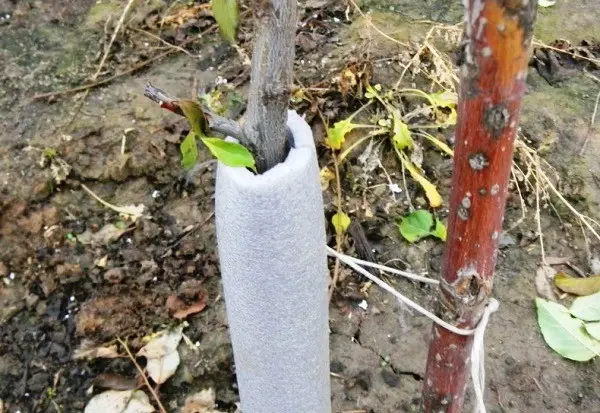Contents
The autumn season is the time to prepare the garden for the winter period. How the gardener takes care of his trees will determine their well-being throughout the year. First of all, this is important for the most common fruit trees – apple and pear trees. The harvest is over, the last leaf has fallen, the apple orchard is preparing for a long, harsh winter. In order for the trees to delight us again with their fabulous flowering in spring, and in summer we can enjoy their magnificent fruits, apple trees need to be properly and competently prepared for winter, sparing no time and effort. Preparing apple trees for winter is a work consisting of several stages and activities. The main stage in this important work is the shelter of trees. Many gardeners are interested in how to properly cover apple trees for the winter in order to protect them from frost and hares. If you are not yet an experienced gardener, then our tips will tell you the answer to this question.
Why cover apple trees
Most temperate apple trees are considered cold winter hardy. If not severe frosts last only a few days, then they will not bring much harm to apple trees, unlike hungry hares. In extreme cases, weak root branches may suffer a little, or roots located close to the surface of the earth will slightly freeze. Therefore, before starting to cover apple trees for the winter, it is important to understand why this should be done. It is recommended to cover the apple tree not only to protect the tree from frost; the main thing is to protect against a variety of rodents (hares, mice, etc.). Timely and reliable shelter of the bark is a prerequisite for the healthy growth and development of the tree in the spring. Such shelter is especially necessary for young trees, since damage to the bark can cause various diseases, and even lead to the death of the apple tree. Preparing apple trees for winter includes protecting the trees from hares and other rodents.

It is generally accepted that before you cover an apple tree (this also applies to pears) for the winter, you need to increase its resistance to frost for some time. Throughout the season, try to do everything to ensure that the tree grows strong and healthy. To do this, you need to remember about timely watering, loosening the earth, fertilizing and fertilizing. At the end of summer, it is recommended to stop watering and increase loosening. This will provide the tree with a supply of minerals, will help stop the growth of the root system, and only then will your measures for sheltering and warming the apple tree be effective. For frost-resistant apple trees aged 5-7 years, warming is considered optional. Provided that the bark of the tree is healthy, there are no visible injuries and diseases on it, the apple tree can independently withstand frost. The ground part of the trunk without additional shelter can withstand frosts up to 20-35 degrees. Columnar apple trees must be insulated for the winter without fail, regardless of their size and age.

Video “Shelter for the winter of columnar apple trees”
The video shows how to prepare a columnar apple tree for wintering; how to cover a plant to protect it from frost and rodents.
How to insulate apple trees
Experienced gardeners believe that not only the quality of their future harvest, but also the fruiting period will depend on how apple and pear trees are covered for the winter. Before you cover apple trees for the winter, it is important to study the climatic features of your area. Sometimes careless gardeners naively hope that the winter will be warm, and do not pay enough attention to warming the trees. This is an unacceptable oversight. According to long-term observations of meteorologists, the winter air temperature often drops to -40°C, and on the surface of the earth to -42-46 degrees below zero. It should be noted that this amplitude on calm days can be up to 10 degrees and higher. In this case, if the apple tree is not insulated, then both the root and the skeletal branches will die. This can be avoided if you not only cover the place of the root system with snow, but also insulate the trunk well with improvised materials – burlap, paper, etc. Siberian gardeners should be especially serious in solving this problem, since long and frosty winters require careful shelter of trees not only from hares, but also from frost.

It is recommended in advance, at the end of November, to start work on warming the root system of the apple tree. After the first heavy snowfall, you should cover the tree trunk with snow to a height of about a meter, but do not forget to remove it in the spring. Siberian gardeners do it a little earlier, depending on the average daily air temperatures. Before snow falls, it is possible to insulate apple and pear trees with spruce branches, paper, cloth or other materials, preferably to a height of 1-1,5 meters. From above, paper or thick fabric is fixed with soft twine or a strong rope. It is believed that this protects the apple tree not only from hares and mice, but also from strong gusty winds and sunburn.
Features of seedling shelter
If trees were planted in the garden in autumn, then the question arises: how to protect apple tree seedlings in winter? Most often, it is recommended to do the same as with older trees.
It is necessary to cover a young seedling, because its damaged bark will crack and hurt, and rotting frozen roots will lead to the death of the tree. This is important to consider for warming both frost-resistant and columnar apple trees.

The most important thing is reliable shelter of the roots. In order for them to winter safely, you need to take care of them in advance. First put manure around the root system, and sprinkle a thick layer of sawdust on top. The root neck is well wrapped with any dense insulating material (agrofibre can be used for this purpose). You can tie the tree trunk with thick white wrapping paper. It is known that the white color has good reflectivity, which means it will protect the seedling from the harmful rays of the sun. It is not recommended to use a film or roofing felt, propped up during the thaw period, they can cause various fungal diseases on the bark. For these purposes, you can use the stems of reeds, corn or sunflowers.
After warming, the young seedling should be covered with an earthen mound up to 30 centimeters high, provided that the soil is dry and loose. Rotting in winter, during thaws, and in spring, when positive temperatures are established, manure will provide top dressing of the root system with minerals. This will contribute to the strong growth and development of your tree. Only then it is recommended to sprinkle the apple tree seedling with the thickest layer of snow.

When preparing a columnar seedling for winter, you need to carefully treat the apical bud. It can be insulated with old rags and wrapped with foil. It is desirable to tie a young tree to a support.
Video “Insulation of fruit trees for the winter”
The video talks about why to insulate fruit trees for the winter, and shows how to do it right.









